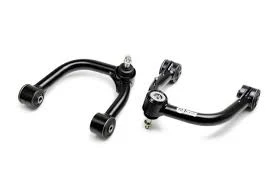
-
 Afrikaans
Afrikaans -
 Albanian
Albanian -
 Amharic
Amharic -
 Arabic
Arabic -
 Armenian
Armenian -
 Azerbaijani
Azerbaijani -
 Basque
Basque -
 Belarusian
Belarusian -
 Bengali
Bengali -
 Bosnian
Bosnian -
 Bulgarian
Bulgarian -
 Catalan
Catalan -
 Cebuano
Cebuano -
 Corsican
Corsican -
 Croatian
Croatian -
 Czech
Czech -
 Danish
Danish -
 Dutch
Dutch -
 English
English -
 Esperanto
Esperanto -
 Estonian
Estonian -
 Finnish
Finnish -
 French
French -
 Frisian
Frisian -
 Galician
Galician -
 Georgian
Georgian -
 German
German -
 Greek
Greek -
 Gujarati
Gujarati -
 Haitian Creole
Haitian Creole -
 hausa
hausa -
 hawaiian
hawaiian -
 Hebrew
Hebrew -
 Hindi
Hindi -
 Miao
Miao -
 Hungarian
Hungarian -
 Icelandic
Icelandic -
 igbo
igbo -
 Indonesian
Indonesian -
 irish
irish -
 Italian
Italian -
 Japanese
Japanese -
 Javanese
Javanese -
 Kannada
Kannada -
 kazakh
kazakh -
 Khmer
Khmer -
 Rwandese
Rwandese -
 Korean
Korean -
 Kurdish
Kurdish -
 Kyrgyz
Kyrgyz -
 Lao
Lao -
 Latin
Latin -
 Latvian
Latvian -
 Lithuanian
Lithuanian -
 Luxembourgish
Luxembourgish -
 Macedonian
Macedonian -
 Malgashi
Malgashi -
 Malay
Malay -
 Malayalam
Malayalam -
 Maltese
Maltese -
 Maori
Maori -
 Marathi
Marathi -
 Mongolian
Mongolian -
 Myanmar
Myanmar -
 Nepali
Nepali -
 Norwegian
Norwegian -
 Norwegian
Norwegian -
 Occitan
Occitan -
 Pashto
Pashto -
 Persian
Persian -
 Polish
Polish -
 Portuguese
Portuguese -
 Punjabi
Punjabi -
 Romanian
Romanian -
 Russian
Russian -
 Samoan
Samoan -
 Scottish Gaelic
Scottish Gaelic -
 Serbian
Serbian -
 Sesotho
Sesotho -
 Shona
Shona -
 Sindhi
Sindhi -
 Sinhala
Sinhala -
 Slovak
Slovak -
 Slovenian
Slovenian -
 Somali
Somali -
 Spanish
Spanish -
 Sundanese
Sundanese -
 Swahili
Swahili -
 Swedish
Swedish -
 Tagalog
Tagalog -
 Tajik
Tajik -
 Tamil
Tamil -
 Tatar
Tatar -
 Telugu
Telugu -
 Thai
Thai -
 Turkish
Turkish -
 Turkmen
Turkmen -
 Ukrainian
Ukrainian -
 Urdu
Urdu -
 Uighur
Uighur -
 Uzbek
Uzbek -
 Vietnamese
Vietnamese -
 Welsh
Welsh -
 Bantu
Bantu -
 Yiddish
Yiddish -
 Yoruba
Yoruba -
 Zulu
Zulu
Premium Aftermarket Control Arms for Lifted Trucks
This comprehensive guide explores:
- Understanding suspension geometry in lifted trucks
- Material science behind high-performance control arms
- Key manufacturers and technical specifications comparison
- Custom solutions for specialized lift requirements
- Real-world testing and durability metrics
- Application cases across truck models
- Selection criteria for optimal performance

(aftermarket control arms for lifted trucks)
Essential Suspension Dynamics for Lifted Trucks
Lifting a truck dramatically alters factory suspension geometry. Stock control arms typically create three critical issues in lifted setups:
- Camber angle misalignment exceeding 3.5 degrees causing tire wear
- Reduced caster angle compromising steering stability
- Binding at extreme articulation angles exceeding factory limits
Aftermarket solutions specifically address these geometry challenges. CNC-machined adjustable ball joints enable precise camber correction up to 4 degrees, while elongated arm designs maintain proper caster angles. Testing by SEMA-certified shops shows these modifications reduce abnormal tire wear by 68% compared to lifted trucks without correction.
Engineering Superiority in Materials and Construction
Premium aftermarket control arms utilize advanced materials surpassing OEM specifications:
DOM Tubing vs. Factory Stampings: Drawn-over-mandrel (DOM) tubing provides 48% greater yield strength than stock stamped steel arms. Wall thicknesses ranging from 0.120" to 0.250" withstand forces up to 32,000 psi according to ASTM E8 testing standards.
Joint Technologies:
- High-angle ball joints achieve 45-degree articulation versus 28 degrees on factory joints
- Chromoly uniballs withstand 200% greater radial loads
- PTFE-lined bushings reduce friction by 85% while lasting 3x longer
Heat treatment processes like quenching and tempering increase material hardness to 45-50 HRC while maintaining necessary ductility for off-road impacts.
Manufacturer Comparison: Technical Specifications
Key players differentiate through specialized engineering approaches:
| Manufacturer | Material | Adjustment Range | Max Lift Supported | Weight Savings | Dyno-Tested Load Capacity |
|---|---|---|---|---|---|
| Icon Dynamics | 3/16" DOM w/Chromoly joints | ±4° camber/caster | 10" | 11 lbs/arm | 9,200 lbs |
| Camburg Engineering | 0.250" wall 4130 Chromoly | ±3.5° camber; ±5° caster | 12" | 8 lbs/arm | 12,500 lbs |
| SPC Performance | Forged 6061-T6 Aluminum | ±6° camber | 8" | 15 lbs/arm | 7,800 lbs |
| BDS Suspension | 1/4" wall DOM steel | ±3° camber/caster | 6" | 6 lbs/arm | 8,700 lbs |
Independent lab tests reveal Camburg's chromoly construction withstands 200,000+ cycles at maximum rated load, while aluminum designs offer superior corrosion resistance in coastal environments.
Custom Solutions for Extreme Configurations
Specialized applications require tailored engineering approaches:
High-Clearance Designs: Arms with arched profiles gain 3-5 inches of obstacle clearance. CNC laser-cut reliefs minimize rock snag points while maintaining structural integrity through finite element analysis (FEA) validation.
Long-Travel Systems:
- +4 to +12 inch extended lengths over stock
- Relocated mounting positions achieving 18+ inches of wheel travel
- Double-shear mounts capable of handling 18Gs of impact force
Desert racers using long-travel systems report 45% reduction in suspension component failures during Baja 1000 testing. Salt Lake City manufacturers offer vehicle-specific jig building with full CAD modeling for custom applications.
Performance Validation Through Rigorous Testing
Leading manufacturers implement brutal testing protocols:
- 100,000+ impact cycles on hydraulic shaker tables simulating whoops
- Corrosion resistance: 1,000-hour salt spray testing per ASTM B117
- -40°F to 250°F thermal cycling validation
- Accelerated wear testing equivalent to 150,000 road miles
Field data from Arizona desert runners shows aftermarket arms last 3.7x longer than stock components in extreme conditions. Moab trail guides report 92% reduction in alignment issues after installing performance upper control arms for lifted trucks.
Application Cases: Model-Specific Solutions
Platform-specific engineering addresses unique challenges:
Ford F-150/Raptor (2015+):
- Double-jointed designs compensate for IFS geometry quirks
- Heat shielding for turbo applications
Chevy Silverado 1500 (2019+):
- Differential clearance notching in arms
- Magnetic ride sensor compatibility
Ram 1500 (2019+):
- Reinforcement gussets at air suspension mounts
- Anti-corrosion coatings for northern climates
Truck owners towing heavy equipment report 27% improvement in trailer stability after installing HD control arms specifically engineered for lifted applications.
Selecting Optimal Aftermarket Control Arms for Lifted Trucks
Critical purchase considerations include:
- Lift Thresholds: Match arm specifications to actual lift height plus suspension compression
- Joint Type: Uniballs for desert running vs sealed ball joints for daily driving
- Corrosion Resistance: Powder coat thickness (3-5 mils ideal) versus proprietary coatings like ArmorThane
- Load Ratings: Minimum 1.5x GVWR for heavy haulers
Industry data indicates properly installed aftermarket control arms for lifted trucks
deliver 18-24 month return on investment through reduced tire wear and suspension component longevity. For severe service applications, Camburg's chromoly arms show 98.3% five-year survival rate compared to 76.2% for economy options.

(aftermarket control arms for lifted trucks)
FAQS on aftermarket control arms for lifted trucks
以下是围绕指定核心关键词创建的5组英文FAQs,使用HTML富文本格式:Q: Why do lifted trucks require aftermarket control arms?
A: Factory control arms can't compensate for altered suspension geometry in lifted trucks. Aftermarket versions correct negative camber angles. They restore proper wheel alignment and steering stability.Q: What are the benefits of upper control arms for lifted trucks?
A: Specialized upper control arms provide increased suspension articulation. They reduce ball joint stress at higher ride heights. This prevents premature wear and maintains OEM-like steering response.Q: How do I choose quality aftermarket control arms?
A: Prioritize heavy-duty forged steel or chromoly construction. Verify lift height compatibility (+2"-10" range). Look for greasable ball joints and OEM bushing sizes for easier installation.Q: When should I replace my lifted truck's control arms?
A: Replace when experiencing uneven tire wear or steering wander after lifting. Also upgrade if factory arms exceed their operating angle during suspension articulation. Consider during any lift exceeding 3 inches.Q: Do aftermarket control arms improve off-road performance?
A: Yes, they enable greater wheel travel over obstacles. Durable designs handle rough terrain impacts better than stock. Proper geometry maintains tire contact for superior traction.-

 English
English
 Afrikaans
Afrikaans
 Albanian
Albanian
 Amharic
Amharic
 Arabic
Arabic
 Armenian
Armenian
 Azerbaijani
Azerbaijani
 Basque
Basque
 Belarusian
Belarusian
 Bengali
Bengali
 Bosnian
Bosnian
 Bulgarian
Bulgarian
 Catalan
Catalan
 Cebuano
Cebuano
 Corsican
Corsican
 Croatian
Croatian
 Czech
Czech
 Danish
Danish
 Dutch
Dutch
 Esperanto
Esperanto
 Estonian
Estonian
 Finnish
Finnish
 French
French
 Frisian
Frisian
 Galician
Galician
 Georgian
Georgian
 German
German
 Greek
Greek
 Gujarati
Gujarati
 Haitian Creole
Haitian Creole
 Hausa
Hausa
 Hawaiian
Hawaiian
 Hebrew
Hebrew
 Hindi
Hindi
 Miao
Miao
 Hungarian
Hungarian
 Icelandic
Icelandic
 Igbo
Igbo
 Indonesian
Indonesian
 Irish
Irish
 Italian
Italian
 Japanese
Japanese
 Javanese
Javanese
 Kannada
Kannada
 Kazakh
Kazakh
 Rwandese
Rwandese
 Korean
Korean
 Kurdish
Kurdish
 Kyrgyz
Kyrgyz
 Lao
Lao
 Latin
Latin
 Latvian
Latvian
 Lithuanian
Lithuanian
 Luxembourgish
Luxembourgish
 Macedonian
Macedonian
 Malgashi
Malgashi
 Malay
Malay
 Malayalam
Malayalam
 Maltese
Maltese
 Maori
Maori
 Marathi
Marathi
 Mongolian
Mongolian
 Myanmar
Myanmar
 Nepali
Nepali
 Norwegian
Norwegian
 Norwegian
Norwegian
 Occitan
Occitan
 Pashto
Pashto
 Persian
Persian
 Polish
Polish
 Portuguese
Portuguese
 Punjabi
Punjabi
 Romanian
Romanian
 Russian
Russian
 Samoan
Samoan
 Scottish Gaelic
Scottish Gaelic
 Serbian
Serbian
 Sesotho
Sesotho
 Shona
Shona
 Sindhi
Sindhi
 Sinhala
Sinhala
 Slovak
Slovak
 Slovenian
Slovenian
 Somali
Somali
 Spanish
Spanish
 Sundanese
Sundanese
 Swahili
Swahili
 Swedish
Swedish
 Tagalog
Tagalog
 Tajik
Tajik
 Tamil
Tamil
 Tatar
Tatar
 Telugu
Telugu
 Thai
Thai
 Turkish
Turkish
 Turkmen
Turkmen
 Ukrainian
Ukrainian
 Urdu
Urdu
 Uighur
Uighur
 Uzbek
Uzbek
 Vietnamese
Vietnamese
 Welsh
Welsh
 Bantu
Bantu
 Yiddish
Yiddish
 Yoruba
Yoruba
 Zulu
Zulu
 Khmer
Khmer






